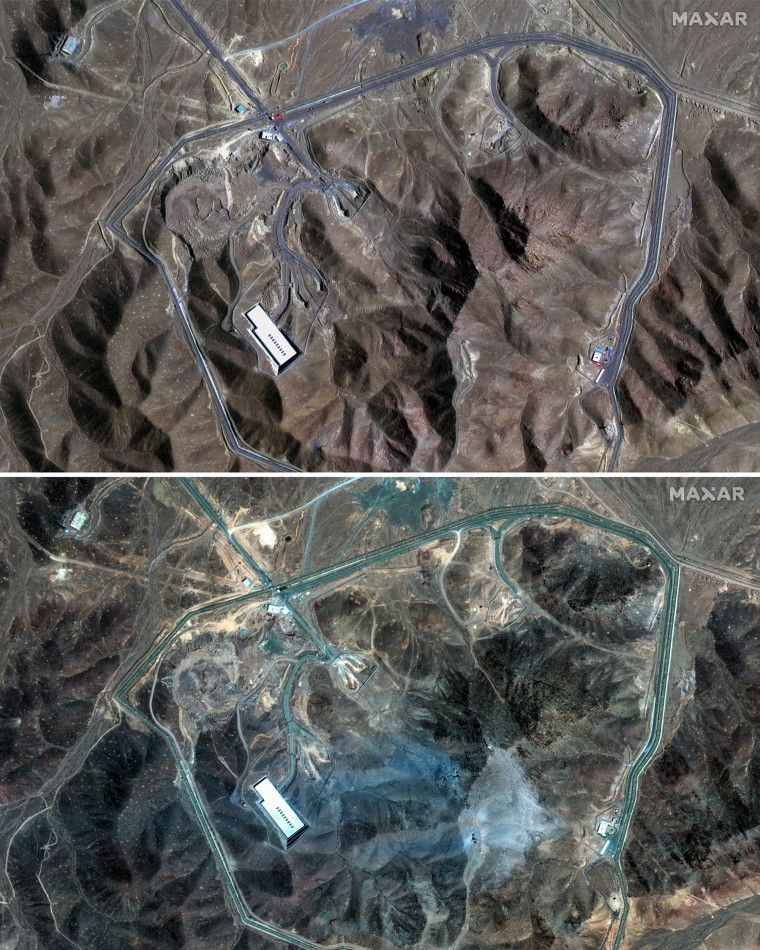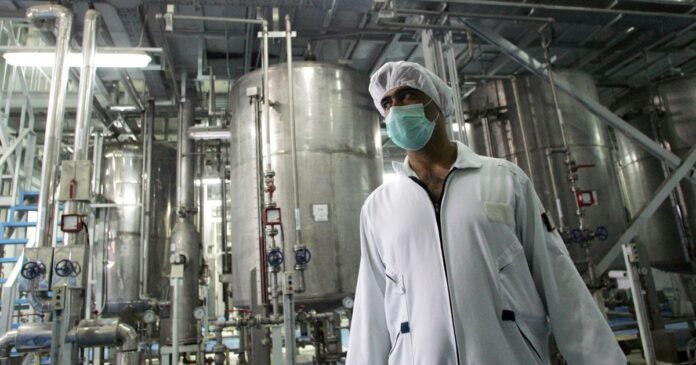Israel hailed its offensive against Iran as a success on Tuesday as it thanked its closest ally, the United States, for its role in “eliminating” the Iranian nuclear threat.
But experts say those celebrations are most likely premature, with an accurate picture of the impact of U.S. and Israeli strikes targeting Iran’s nuclear program unclear and hundreds of pounds of enriched uranium still unaccounted for.
“It’s far too soon for the United States or Israel to claim that Iran’s nuclear program has been destroyed,” Kelsey Davenport of the Arms Control Association told NBC News on Monday.
Too soon to tell
While President Donald Trump claimed over the weekend that the U.S. had “completely and fully obliterated” Tehran’s key nuclear sites, including Fordo, buried deep under a mountain, Isfahan and Natanz, the full impact of the strikes remains unclear.
Meanwhile, nearly 400 kilograms, or 880 pounds, of uranium enriched to 60% purity is still publicly unaccounted for.

Follow along for live coverage.
Iran has maintained that it does not seek to build nuclear weapons, but its rapid acceleration in uranium enrichment, as reported by the International Atomic Energy Agency (IAEA), sparked alarm before Israel’s and the U.S.’ strikes. Power plants require the radioactive metal to be enriched to only 3%-5%, whereas 90% is required to build a nuclear warhead.
Rafael Grossi, director general of the IAEA, the United Nations nuclear watchdog, on Sunday said that damage was visible at the Fordo and Natanz sites after American B-2 Spirit bombers dropped 14 GBU-57 Massive Ordnance Penetrator munitions, also known as “bunker busters.” Submarine-fired Tomahawk cruise missiles hit targets at Isfahan.
But he said “no one” including his agency was “in a position to assess the underground damage at Fordo” as he called for inspectors to be allowed to visit Iran’s nuclear sites to account for the stockpiles of uranium and, in particular, “the 400kg enriched to 60%.”
On Tuesday, Israel declared its operation against Iran a success as it said it had agreed to a shaky ceasefire announced earlier by Trump.
Trump accused both sides of violating the ceasefire, telling reporters he was going to see if he could bring an end to the infractions as he looks to force Tehran back to the negotiations on its nuclear program.
Was enriched uranium moved?
It’s unclear whether the enriched uranium might have been moved before the U.S. launched its strikes on Saturday.
Sen. Markwayne Mullin, R-Okla., suggested Monday in an interview with CNBC that U.S. intelligence had found that Iran did not move nuclear material from its Fordo facility before the U.S. attack.
NBC News was not able to independently verify that.
Iranian Foreign Minister Abbas Araghchi had warned IAEA director Grossi in a letter on June 13 that Iran would adopt “special measures to protect our nuclear equipment and materials.”
Images taken two days before the U.S. strike on Fordo released by Maxar Technologies, which provides satellite images used by various government agencies, show 16 cargo trucks on an access road leading up to the nuclear enrichment facility, with images captured the following day showing the trucks had moved away from the sites.





